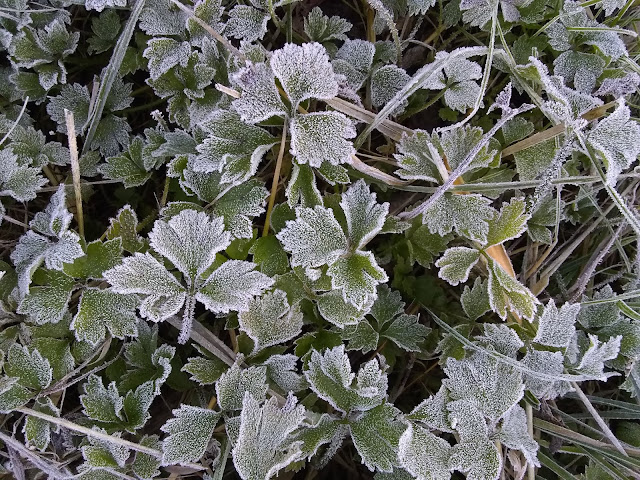An encounter with two volunteers in Queen's Park led me to learn the amazing story of an internationally renowned artist, who I had previously only heard of in passing.... and to learn more about Oak Bay's encouragement of artists.
The volunteers were members of the Oak Bay Community Association, and they were removing English Ivy -- an arduous task.
 |
| Clearing English Ivy from the shoreline of Oak Bay at Queen's Park |
One of the reasons that they were removing English Ivy from this particular section of the shoreline relates to the artist Fenwick Lansdowne. This is where Lansdowne spent much time observing birds; he lived in Oak Bay for many years until his death in 2008.
Later this fall a memorial will be installed recognizing Lansdowne, who was known internationally for his paintings of birds. According to the volunteers I spoke with, there is no other memorial honouring Lansdowne in Victoria.
Since I knew little of the artist, my curiosity was sparked. But before I write about more of what I learned of Lansdowne, I want to touch on Oak Bay's encouragement of artists in general.
I had already noticed, on previous meanderings through the community, pieces of art which intrigued me.
 |
| The Hunt by sculptor Ken Hall. These are not dogs, but a pack of wolves! Not shown is a large buck that the wolves are chasing. |
Usually I am wearing cycling shoes when I wheel by this art installation on Beach Drive, and I don't take the time to stop and explore. "The Hunt" was originally part of an Oak Bay program called Arts Alive. For several years now, sculptors' pieces have been installed throughout the community, and people vote on their favorites. Then, the municipality purchases some of the pieces. "The Hunt" was actually purchased privately, and then donated back to the community.
"The Hunt" is in the same park where the memorial to Fenwick Lansdowne will be placed.
Lansdowne was only 19 when he had his first exhibit, at the Royal Ontario Museum. He was born in Hong Kong to British parents, and contracted polio when he was 10 months old. Initially he was paralyzed in as much as 75% of his body; his parents travelled to London, then to Vancouver Island, searching for ways to help him, such as the newly evolving practice of physiotherapy. Lansdowne claimed he was "unteachable" within the school system; he only wanted to draw and paint, which he taught himself to do. In Victoria, he spent time at the provincial museum where staff guided him in preparing specimens, teaching him natural history illustration, and even letting him take home bird specimens to study and draw.
Lansdowne's exhibit in the Royal Ontario Museum was the serendipitous consequence of his high school guidance counsellor sending samples of his drawings to a publishing friend in Toronto, who showed them to John Livingstone, the executive director of the National Audubon Society. In turn, Livingston took the drawings to the museum, which offered an exhibition to Lansdowne.
It would be another four decades after the ROM exhibit before Lansdowne would have an exhibit at the Victoria Art Gallery in his home town of Victoria.
In 1995 Lansdowne was awarded the Order of BC. By this time he had already received the Order of Canada (1976).
 |
| Fenwick Lansdowne, taken with the medallion for the Order of British Columbia, 1995. Source: https://orderofbc.gov.bc.ca/members/obc-1995/1995-fenwick-lansdowne/ |
According to an online story about his son Tristram, who is also an artist, Lansdowne treated his art as a job, and worked regular office hours from home. His studio must have been fascinating for a child; Tristram talks of opening cupboard doors and finding preserved bird skins, which his father used as models.
 |
| Lansdowne's meticulous observations are evident in this painting of a Great Grey Owl. |
Lansdowne's love of nature as naturalist and birdwatcher influenced his family. Tristram is quoted as saying that the time spent outdoors had a bigger impact on him than did living in an artistic environment. (https://www.timescolonist.com/oak-bay-raised-artist-pays-tribute-to-father-s-work-1.1117557)
A tribute by Iain Hunter in the Times Colonist from 2008, just after Lansdowne's death, is titled "An Artist Who Felt for All God's Creation". Hunter describes Lansdowne's sensitivity to the loss of habitat for wildlife, and how he grieved the vanishing swallows and butterflies,
In 2014 Tristam Lansdowne published a retrospective book about his father's work. Here is the cover:
 |
| Cover of book by Tristram Lansdowne about his father |
Briony Penn focussed on Tristram's book - and Fenwick himself - at https://bcbooklook.com/2017/02/07/a-fen-fan-examines-major-retrospective/. This is an excellent article if you want to learn more about Lansdowne; I have drawn on her research extensively for this blog post.
Here are two more images of Lansdowne's work, reflected in book covers:




































